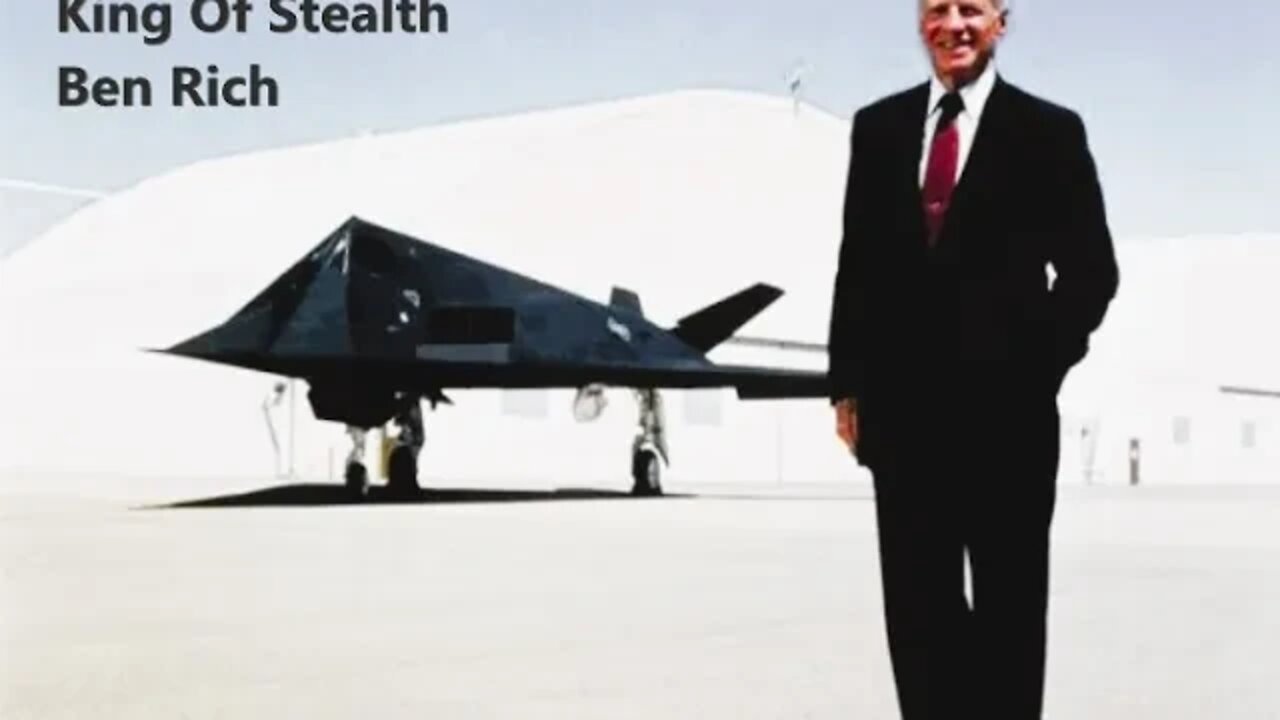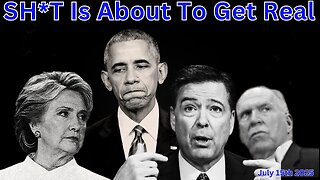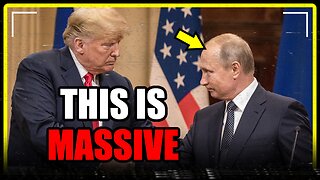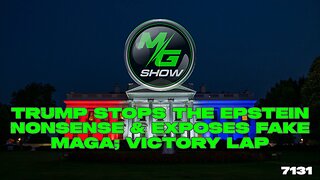Premium Only Content

King Of Stealth Ben Rich, Inventor Of The Top Secret F117 Stealth Fighter
Rich was born in Manila in the Philippines. He was one of five children of British lumber mill superintendent Isidore Rich and his French wife, Annie, the daughter of one of his paternal grandfather's Jewish customers who lived in Alexandria, Egypt. The Rich family was one of the first Jewish families to settle in Manila. Having fled the Philippines just weeks before the Empire of Japan's attack on Pearl Harbor, they moved to the United States in 1942, where Rich became a naturalized US citizen. He worked (with his father) in a Los Angeles, California, machine shop during World War II, and studied at Alexander Hamilton High School. After the war he started his college education when he was 21, majoring in mechanical engineering at UC Berkeley, followed by a master's degree in aeronautical engineering at UCLA, instead of the medical field as originally planned. He would later complete the Advanced Management Program at Harvard Business School.
Lockheed
Upon graduation Rich was hired by Lockheed as a thermodynamicist. There he worked on a variety of projects - he was awarded a patent for designing a nichrome heating system which prevented Navy patrol plane crew members' penises from freezing to their urine elimination pipes. He designed inlet ducts for the F-104 Starfighter, the C-130 transport aircraft, and the F-90 fighter.
The Skunk Works
In December 1954 Rich transferred to the Skunk Works, the secret research and development section run by Lockheed's Chief Engineer, Clarence "Kelly" Johnson. There he designed the inlet ducts for the U-2, then led the effort to design and build a large-scale hydrogen liquefaction plant for project Suntan, a proposed hydrogen-powered supersonic very high-altitude aircraft to replace the U-2. After Suntan was canceled, Rich became propulsion systems program manager for the U-2's successors, the A-12 and the SR-71 Blackbird. Rich was chief aerodynamicist for the projects, designer of the shock cone engine inlet, air conditioning and heat management systems. He was also involved in the specification of the aircraft's black skin coatings which optimized dissipation of their tremendous aerodynamic heating as well as incorporating materials to reduce radar signature. The aircraft incorporated features that were later referred to as low observables or stealth technology.
When SR-71 crews became upset that engineers were not putting enough effort into solving a constant problem with violent engine unstarts in flight, Rich considered taking a flight in the SR-71 to experience the phenomenon himself, which included having to go through the same flight physical as pilots. He did not go through with the flight. He did eventually manage the problem by installing automatic controllers to maintain aircraft control during unstarts.
He briefly worked on a program that used ionizing radiation to help absorb radar coming from ahead of the aircraft. The radiation proved to be excessive and the test pilot disliked the heavy radiation shielding he had to wear. The project was cancelled when the military decided the radar signature was sufficiently low enough without the ionizing equipment. The concept was proven to work, but unfeasible.
Later, as Johnson's successor as leader of the Skunk Works, Rich championed and directed the early experimental prototypes of stealth technology and led the development of the F-117 stealth fighter.
He is the author of Skunk Works: A Personal Memoir of My Years at Lockheed.
-
 LIVE
LIVE
Matt Kohrs
10 hours agoCPI Inflation Report, Stocks Skyrocket & Bitcoin Cools || Live Trading
932 watching -
 LIVE
LIVE
Wendy Bell Radio
5 hours agoSH*T Is About To Get Real
10,386 watching -
 4:01:10
4:01:10
The Bubba Army
1 day agoGhislaine Maxwell: Ready to TALK?! - Bubba the Love Sponge® Show | 7/15/25
192K13 -
 9:16
9:16
Zoufry
22 hours ago $2.32 earnedThe Evil Design of Mcdonald's Drive Thru
19.5K10 -
 LIVE
LIVE
GritsGG
2 hours agoWe Are Winning Every Game!!!! Most Wins 3040+! 🔥
88 watching -
 1:57:28
1:57:28
Gary Cardone
2 days ago $2.44 earnedLIVE With Gary Cardone
20.1K3 -
 8:01
8:01
MattMorseTV
20 hours ago $13.20 earnedTrump just DROPPED a BOMBSHELL.
85.1K86 -
 LIVE
LIVE
FyrBorne
12 hours ago🔴Warzone M&K Sniping: Is The Overlook OP or Bait?
291 watching -
 2:00:53
2:00:53
MG Show
23 hours agoTrump Stops the Epstein Nonsense & Exposes FAKE MAGA; Victory Lap
119K100 -
 39:21
39:21
MattGaetz
1 day agoThe Anchormen Show with Matt Gaetz | Feeding the Dragon
50.7K28